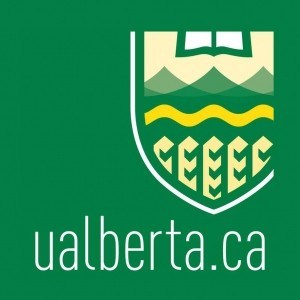Photos of university / #ualberta
The Bachelor of Science in Environmental Earth Sciences at the University of Alberta offers students a comprehensive understanding of the Earth's physical systems and the environmental processes that shape our planet. This interdisciplinary program combines principles from geology, hydrology, atmospheric science, and environmental chemistry to prepare graduates for careers addressing environmental challenges and sustainable resource management. Students will engage in rigorous coursework covering topics such as geological processes, climate change, pollution control, remote sensing, and environmental policy. The program emphasizes practical skills through laboratory investigations, fieldwork experiences, and advanced data analysis techniques. Students have opportunities to collaborate with industry partners, participate in research projects, and gain hands-on experience in environmental assessment and monitoring. With a focus on both scientific fundamentals and applied environmental problems, the program aims to produce graduates capable of contributing to environmental conservation, resource management, and policy development. Graduates can pursue careers in environmental consulting, government agencies, non-profit organizations, or further studies in graduate programs. The curriculum is designed to foster critical thinking, problem-solving abilities, and a commitment to ethical environmental stewardship. The university's modern facilities, experienced faculty, and strong links to industry ensure students receive a high-quality education aligned with current industry standards and environmental challenges. Graduates of the Environmental Earth Sciences program at the University of Alberta are well-equipped to address pressing environmental issues and contribute meaningfully to creating sustainable solutions for the future.
The Bachelor of Science in Environmental Earth Sciences at the University of Alberta offers students a comprehensive education in understanding the complex interactions between Earth's physical components and the environment. This program is designed to equip students with foundational knowledge in geology, geophysics, hydrology, and environmental science, preparing them for careers in resource management, environmental consulting, conservation, and research. Throughout the program, students explore critical topics such as Earth's processes, natural hazards, pollution control, climate change, and sustainable development. The curriculum combines theoretical coursework with practical fieldwork, laboratory analysis, and research projects, fostering hands-on learning experiences that are essential for understanding real-world environmental challenges. Students will develop skills in data analysis, environmental assessment, geographic information systems (GIS), remote sensing, and risk modeling. The program emphasizes an interdisciplinary approach, integrating principles from geology, ecology, chemistry, and physics to address complex environmental issues. Collaborative projects and internships are encouraged to provide real-world experience, facilitating connections with industry and government agencies. Graduates of the program will be well-prepared for employment in environmental consulting firms, government agencies, non-governmental organizations, and research institutions. Additionally, the program offers a solid foundation for students interested in pursuing graduate studies in environmental science, geology, or related fields. The University of Alberta's state-of-the-art facilities, including field stations and laboratories equipped with advanced technology, support students’ learning and research activities. Our dedicated faculty members are actively engaged in cutting-edge research, ensuring that students receive instruction grounded in current scientific knowledge and practices. With a strong emphasis on sustainability and responsible resource management, the Environmental Earth Sciences program aims to develop professionals capable of making meaningful contributions to environmental protection and sustainable development initiatives worldwide.
Curriculum requirements for the Environmental Earth Sciences Bachelor of Science program at the University of Alberta typically include a combination of core courses, major-specific courses, electives, and a capstone experience. Students are generally required to complete foundational courses in introductory geology, physical geology, and environmental sciences to build a broad understanding of Earth's systems. These foundational courses might encompass topics such as mineralogy, petrology, sedimentology, and geophysics.
In addition to the core coursework, students must undertake advanced courses related to environmental geology, GIS (Geographic Information Systems), remote sensing, and environmental management to develop specialized skills pertinent to environmental assessment and sustainable resource management. Laboratory and fieldwork components are integral to the program, providing hands-on experience in data collection, analysis, and interpreting environmental phenomena.
Typically, the program mandates the completion of a set number of credits in mathematics and physical sciences, such as calculus, physics, and chemistry, to support scientific reasoning and quantitative analysis skills. Elective courses are often offered across related disciplines, including biology, chemistry, and engineering, allowing students to tailor their studies to specific interests within the environmental earth sciences field.
A significant component of the degree program is the capstone project or thesis, which involves comprehensive research under faculty supervision, applying theoretical knowledge to real-world environmental challenges. The program encourages internships and cooperative education opportunities to gain practical experience in environmental consulting, government agencies, or industry.
Overall, the program emphasizes multidisciplinary approaches, integrating geology, chemistry, physics, and environmental science principles, preparing graduates for careers in environmental assessment, resource management, policy development, and scientific research. It is designed to ensure students acquire both a broad scientific foundation and specialized expertise necessary to address complex environmental issues facing society today.
The University of Alberta offers a variety of financing options for students enrolled in the Environmental Earth Sciences undergraduate program. Tuition fees vary depending on the student's residency status, with Canadian residents paying a lower rate compared to international students. For Canadian residents, the approximate annual tuition fee is around CAD 5,500 to CAD 7,500, while international students may pay between CAD 20,000 and CAD 30,000 per year. Besides tuition, students should consider additional costs such as student fees, books, supplies, accommodation, and living expenses, which can vary widely based on individual circumstances.
The university provides several scholarship opportunities tailored specifically for students in science and environmental disciplines. These include entrance scholarships, merit-based awards, and departmental scholarships that recognize academic excellence and potential. For example, incoming students with outstanding academic records may be eligible for the University of Alberta Entrance Scholarships, which can range up to CAD 10,000. Additionally, there are merit-based scholarships targeted at continuing students who demonstrate exceptional performance in their courses.
Financial aid options also include government student loans and grants available to eligible Canadian citizens and permanent residents. The Canada Student Loans Program offers low-interest loans and repayable grants to help cover educational costs. The Alberta Grants and Loans program complements federal support and provides additional resources to Alberta residents. International students are generally ineligible for government-funded financial aid but can explore scholarships offered directly by the university or external organizations.
Part-time work opportunities on and around campus are another way students can finance their studies. The university employs students in various roles, including research, administrative support, and tutoring, which not only help with finances but also provide valuable work experience. Co-op programs, if available within the Environmental Earth Sciences curriculum, may also offer paid work placements that integrate academic learning with practical industry experience, thereby assisting with tuition and living expenses.
Students are encouraged to apply early for scholarships and financial aid, as many awards are competitive and have specific deadlines. Networking with the university’s Financial Aid Office and the department of Student Funding Services can provide personalized guidance and up-to-date information regarding available funding options. Additionally, external organizations and environmental groups sometimes sponsor scholarships or bursaries relevant to students pursuing environmental sciences degrees.
In conclusion, financing studies in the Environmental Earth Sciences at the University of Alberta involves a combination of tuition fees, scholarships, government aid, part-time employment, and external funding sources. Planning ahead and exploring all available options can significantly alleviate the financial burden, allowing students to focus fully on their academic and career goals in the environmental sciences field.
Environmental Earth Sciences at the University of Alberta is a comprehensive undergraduate program designed to provide students with a solid foundation in the scientific principles underlying the Earth's physical environment. The program emphasizes the interdisciplinary nature of earth sciences, integrating geology, geophysics, geochemistry, and environmental science to prepare students for careers in resource management, environmental consulting, research, and academia. Students will engage in coursework that covers fundamental topics such as mineralogy, sedimentology, tectonics, hydrology, climate change, and environmental monitoring. The program also offers laboratory and fieldwork components, giving students practical experience in data collection, analysis, and interpretation of earth processes. Advanced courses delve into topics like renewable energy resources, environmental impacts of human activity, and sustainable development practices. The curriculum is designed to develop critical thinking, problem-solving skills, and a scientific approach to environmental challenges facing society today. Students may have opportunities to participate in research projects, internships, and collaborations with industry partners, enhancing their practical skills and employability. The program aims to produce graduates capable of understanding complex earth systems, assessing environmental risks, and contributing to sustainable solutions for environmental issues. The University of Alberta’s state-of-the-art facilities, laboratories, and field stations provide students with a conducive learning environment. Additionally, the program encourages interdisciplinary learning and supports students in pursuing honours or specialization options to tailor their education to specific career goals. Graduate pathways include potential postgraduate studies in earth sciences, environmental sciences, or related fields, as well as careers in government agencies, environmental consulting firms, resource companies, and academic institutions. Overall, the Environmental Earth Sciences program at the University of Alberta is designed to equip students with the knowledge, skills, and experience needed to address the pressing environmental challenges of the modern world and promote sustainable management of Earth’s resources.


